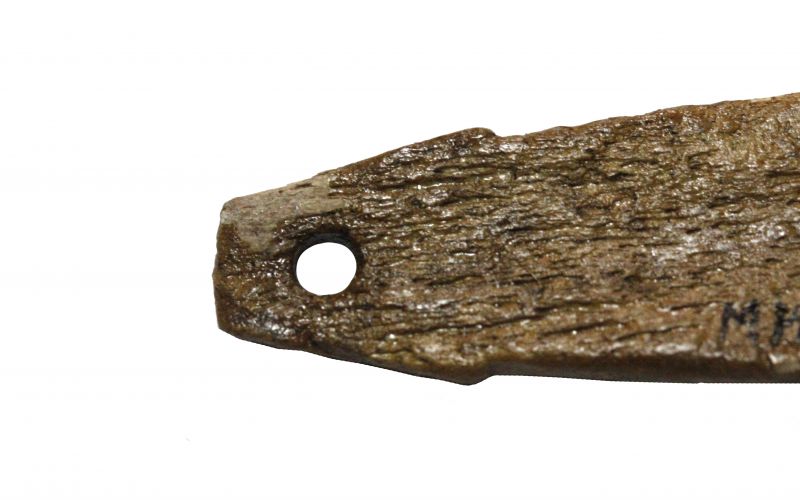Pendant with an ornament
An item made of antler in the form of a thin blade with an elongated drop shape. Its extended end has a light sharpened protrusion, its narrowed end is smoothed. Below the hole, there are small shallow ledges ("shoulders").
On the front side of the plate there is a drawn transverse dashed line. Next to it, there is a vertical wavy line abutting an open rectangle. In the upper part, a triangle is depicted (ear-?). In the lower part, there are some dots. The whole composition shows us a zoomorphic image of a predator. On the both sides of the hole, there are some small nicks which can serve as channels for fastening (sewing).
The back side is slightly concave.
The item was found in a burial of a child of 5-6 years old.
Manufacturing technique
Cutting, grinding
Storage location
The Museum of Buryat History named after Khangalov M.N.Inventory number
18671/2Size
Length - 53,30 mm
Width - 16,98 mm
Thickness - 3,26 mm
Diameter of the hole - 3,45 mm
Material
AntlerDating
III cent. BC - I cent. ADCulture
XiongnuThe author of the excavations
Konovalov P.B.1966
Publications
Konovalov P.B. Hunnu v Zabajkal'e (pogrebal'nye pamyatniki) // Ulan-Ude, 1976. - 248 S.
Pankina A.I., Lbova L.V., YAroslavceva L.G. Gravirovannoe izobrazhenie volka na rogovoj podveske hunnskogo vremeni (mogil'nik CHeremuhovaya pad', Zabajkal'e) // Iskusstvo Evrazii. – 2020. – № 1 (16). – S. 10-22.










